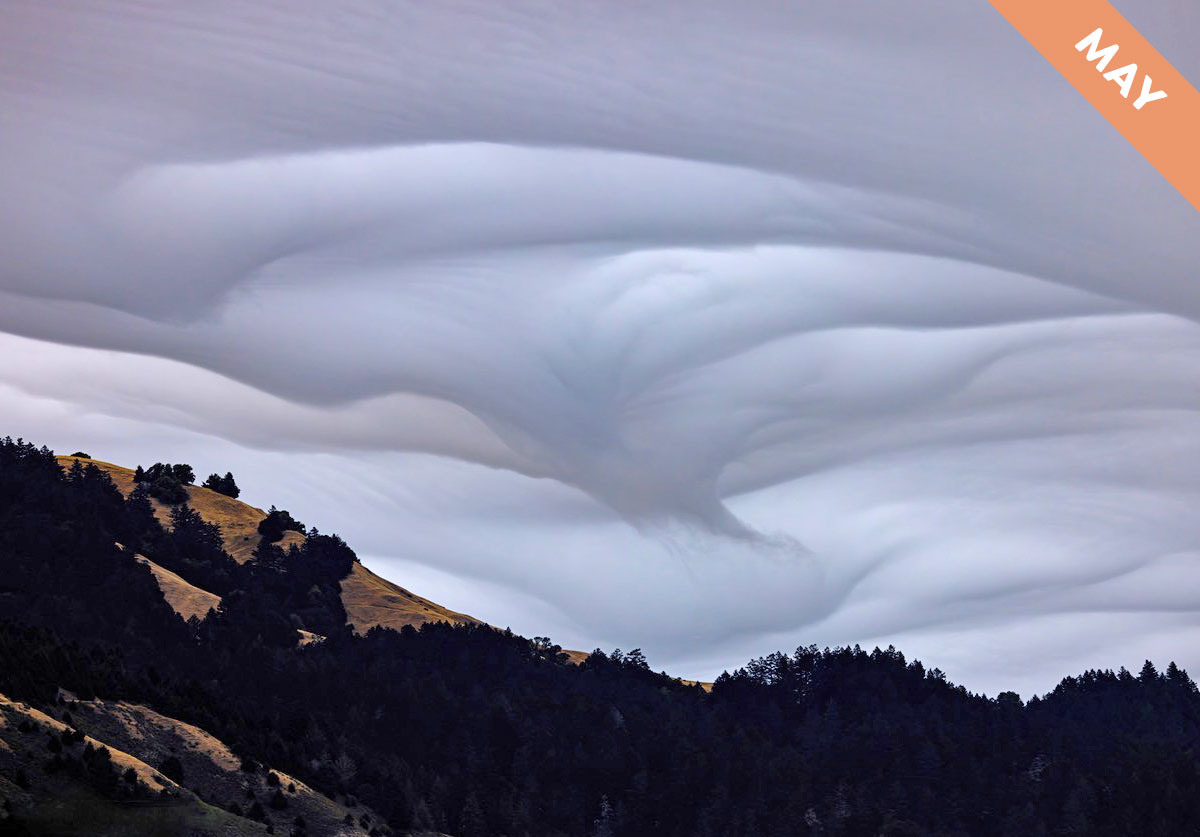Asperitas – When Sky Imitates Sea
Characterised by its turbulent and churning base, asperitas is a cloud feature associated with Stratocumulus and Altocumulus clouds. It is when the underside of one of these layered clouds develops undulations that look like ocean waves on a stormy day, if you were viewing them from underwater.
Asperitas means ‘roughness’ in Latin and is a cloud name that was only recently made official. The classification was added to the International Cloud Atlas in 2017 after the Cloud Appreciation Society suggested that the World Meteorological Organization should recognise it as a cloud type.
The exact processes responsible for the formation of asperitas clouds are still uncertain. Atmospheric waves, known as gravity waves, appear to be at play. Rather like ocean waves, these oscillations can travel across the surface of a cloud. They are likely set off by the rising motion of air disturbed in the collision of air masses. In the case of asperitas, these gravity waves are likely deformed and made more chaotic by the presence of ‘shearing’ winds. These are when the wind speed or direction just above the cloud layer differs significantly from that of the wind just below it.
This asperitas cloud spotted by Clint Graves over Stinson Beach, California, US shows curls, like upside-down meringue peaks, extending from its base. These curling peaks are sometimes seen on asperitas. They are like inverted versions of the fleeting breaking-wave features known as fluctus clouds. The peaks were likely caused by the same shearing-wind conditions. The rough, raised terrain of Mount Tamalpais State Park just inland from the coast would have likely helped set up the wind shear by slowing the lower-level winds while leaving higher winds unaffected.
Whatever the exact causes of Clint’s asperitas, it certainly drew the attention of others. ‘There were many people out in the street when I took the photo,’ Clint told us, ‘all marvelling at this strange cloud event,’ as sky imitated sea on the shores of the Pacific.
Asperitas cloud features in Stratocumulus over Stinson Beach, California, US spotted by Clint Graves.



